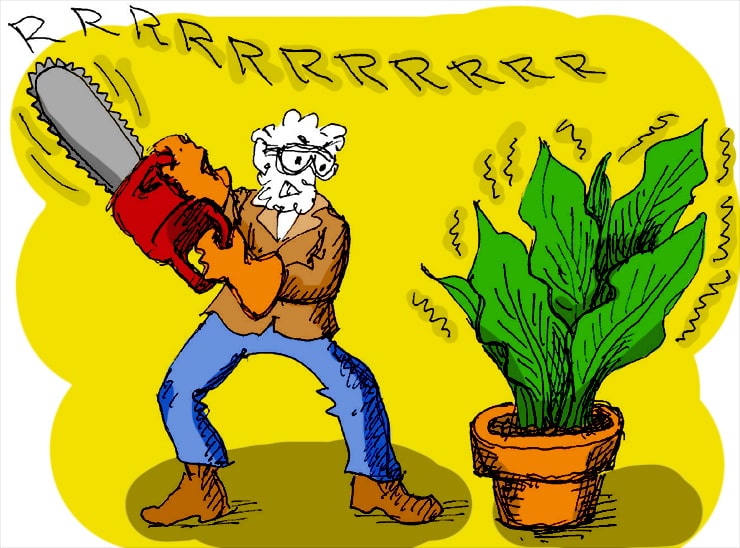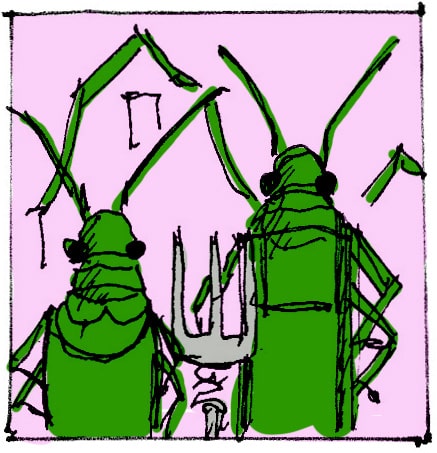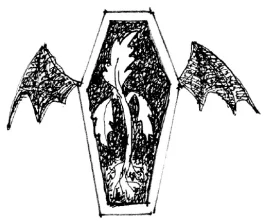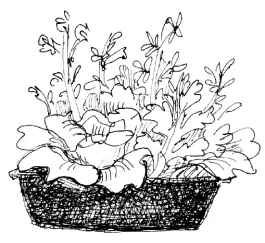Read by Michael Flamel
Back when I was the editor of Organic Gardening magazine (which was back when there was an Organic Gardening magazine to edit [boo hoo]), many of my editorial columns were a personal “garden report,” which in the hands of a real gardener would have recounted inspiring celebrations of the art of lilac pruning or the trellising of cucumbers so perfectly they would lure Flower Show judges off the street, like ants to fallen ice cream.
My stories were more like “Better call Sol,” the new TV series about the “Breaking Bad” lawyer you frantically contact when you need to change a blown tire with a state trooper glaring at you and a body on top of the jack and spare (body) in the trunk. But with plants. My garden is a lot like Lenny Bruce’s childhood school: “I won’t say it was a tough place, but we did have our own coroner. We used to write essays like ‘What I’m Going To Be If I Grow Up.’”
The readers loved it. “Oh, you make us feel so good about our mistakes, which so rarely involve gasoline.” I’m glad somebody felt good, because the actual plants involved used to try and vine the cell phone out of my pocket so they could call the Red Cross to bring them blankets and chocolate and negotiate a treaty that involved more than ninety minutes of sun a day—and to challenge my argument that a visible sunset counts as an hour.
Take, for instance, my pepper plants—please!
Many plants that people treat as annuals are actually perennial in nearby areas like Phoenix, New Mexico, and Chile, and so come inside to spend winter on my insulated porch, on a big table overhung by a high-intensity light. The fact that the light was actually hung by moi and has not come crashing down to supply the material for 13 of these literary therapy sessions is perhaps the most surprising of my horticultural achievements. (Not that I seem to lack material.)

But, as it was never truly alive, perhaps it doesn’t count.
…Which brings us back to the pepper plants.
The first plants to come inside are the two giant Birds of Paradise I savaged from my final Philadelphia Flower Show display in 1997. Whoops—I meant “salvaged”—unless you count that time I decided that what was then one plant had become pot bound, and I still had a tiny bit of gas left in the chainsaw. (I’ll bet my wife would not have been NEARLY as mad if the plant(s) had still been outside at the time. Picky, picky, picky.)
But despite starring in the Pennsylvania Chainsaw Massacre, they did not die, which amazed everyone involved, including the chainsaw—although they did take one or two or maybe eight light years to recover enough to flower again. (During which time I of course learned that the secret to great blooms is to keep them really pot bound.) But they did not die…
…Which brings us once again to the peppers, which tend to be the second set of plants hauled out of the clutches of late September. But there is a perennial problem with this trick. (Get it? “Perennial” problem? C’mon—you people; this is as good as it gets! [Boy, this is a tough room! This room is so tough the waiters have to spread meat tenderizer on the table! I tell ya…].)

Anyway, the problem is that aphids love to infest pepper plants more than they love smothering roses but are cagier about it—you never see them while the plants are outdoors. But after 15 years or so of bringing my peppers inside to save them from winter, I began to realize that I was simply choosing a different kind of demise for them. Or running a highly successful indoor aphid farm—it’s all in the perspective, right? Don’t we strive to adorn our house with LIVING things over the winter to bring joy as the month of February checks us daily for heart blockages and balance issues? (Don’t think of winter as trying to ‘kill us’; it’s all just a long stress test—accompanied by days that get dark at 2:30. [Don’t take a nap now; you’ll miss today!]).
Well, aphids are alive; and so there was more life in the house than that winter I stored our toilet paper and Kleenex in the attic and accidentally provided the premium bedding for a luxury hotel occupied by Mickey and his widely extended family.
But there were horticultural successes! Every bedding plant begonia brought indoors—to the porch and every somewhat sunny (or not) windowsill in the house—has not only failed to cross the river Styx (hey—that’d be a good name for a band! Eh, maybe not…), but bloomed throughout this second Hellish winter in a row. (The begonias may have stayed on the correct side of the shore, but winter couldn’t wait for the ferry and jumped in to swim across.)
The blue holly out front (which, true to its name, is not blue in any way) refused to take a dive like last year and miraculously remained upright through endless snow and ice storms (after last year playing “Where’s that plant?” until May, when it was revealed not to have been plowed away after all, but instead changed to that rare form of prostate holly you don’t see very often.) (People who did not buy the ‘rare prostate holly’ story were then told that it had tried to abandon this mortal coil but got trapped in the second dimension—like the cucumber I planted way too close to a pumpkin vine years ago [Hey, look! There’s different fruits under here—or maybe they’re just green Dr. Scholl’s Odor Eater pads!]).
And there was the indoor salad garden experiment. Some company sent me this cute little stand with five big LEDs in the top and a little black box that fit underneath. At least I think it was meant for indoor growing—the shipping carton showed (what was clearly supermarket) lettuce growing in the box (they neglected to remove the oversized twist-tie that said “Dole”), but there were no instructions or drainage holes; a dangerous combination.

But I realized that the box would perfectly hold one of those big baby salad green/spinach clamshells they sell in the part of the supermarket where the Vanna White lettuce had once lived, heated up an ice pick (one of my top gardening tools), melted/poked lots of drainage holes in the bottom, filled it with soil-free mix, sowed two packs of mesclun seeds, chased away the Grateful Dead fans who misunderstood what the seeds would grow (I hope), watered, and in a week we had a nice carpet of mixed greens. A couple of weeks later, we were harvesting ‘cut and come again’ greens Ant-man style, just clipping enough to adorn a sandwich at a time. Success! Food! Indoors in the Winter! Whoo!
But then there were the peppers. My hired man, doing all the heavy lifting because of my getting a new shoulder in May (the Three and a Half Thousand Dollar Man—the cyborg from The Dollar Store!), got the Birds and begonias inside, and then began the laborious task of carefully blasting each pepper plant off with sharp streams of water to displace small, sucking hitchhikers until finally, the porch was filled and we APPEARED to be done. ‘So far, so good’ (which is what the guy said after he jumped off the Empire State Building as he passed the 25th floor…) until my wife notes two things.
One: It will drop into the extremely low 30s that evening (an evening which had already technically arrived if you want to be a fuss and insist the term has something to do with daylight).
And Two: “What about the OTHER pepper plants outside?” Huh? Wha?
“Those right over there; you can see them in the dark!”
Well, that was their trick; they were vampire peppers that hid in coffins during the day!

…And would shortly rest in them at night as well, because despite my best efforts at washing them off in the freezing dark (my hands are STILL cold!), little aphid terrorists slipped across the border and quickly spread their nefarious creed of pepper nihilism. I sprayed water valiantly; leaves turned yellow. I sprayed PRINCE Valiantly and they yellowed faster—this time developing weird page-boy haircuts. By February, they were sticks.
“They’re just resting,” I insisted. “They’ve gone dormant.”
“They” replied my wife, “have joined the choir invisible!”
To put the boot in, my mixed psychedelic salad greens had been harvested to their max and began to bolt. I pulled off the little stalks for a while, but gave up for a Coward’s Week in Florida (I just wanted to see that there were still fingers under all those gloves!). When we returned, the aphids had hung a little “Welcome Home, Loser!” sign in the Dead Pepper Forest to greet us.
And then we stepped into the kitchen—where The Little Garden That Could was adorned with hundreds of beautiful little flowers. My cut-and-come-again garden was in full bloom. It had become an indoor cut flower garden!
“Nice work,” said my wife.
“Well, this was always the plan,” I smoothly lied. “Always the plan…“ ❖


 Previous
Previous



I love Mike McGrath’s stories and sense of humor.